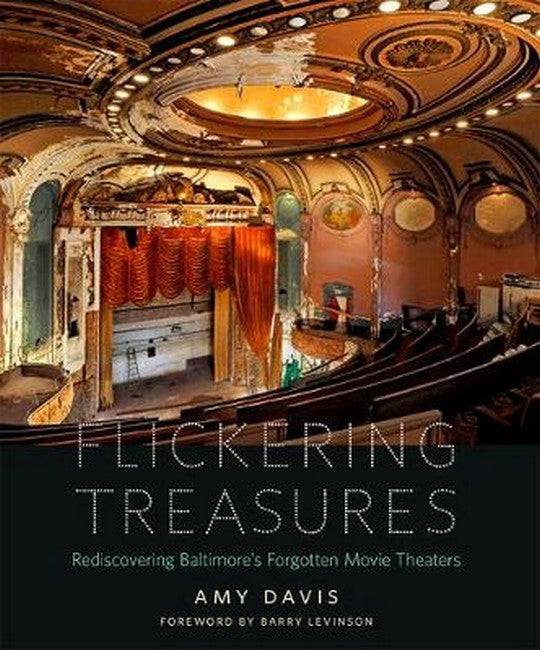Baltimore has been home to hundreds of theaters since the first moving pictures flickered across muslin sheets. These monuments to popular culture, adorned with grandiose architectural flourishes, seemed an everlasting part of Baltimore's landscape. By 1950, when the city's population peaked, Baltimore's movie fans could choose from among 119 theaters. But by 2016, the number of cinemas had dwindled to only three. Today, many of the city's theaters are boarded up, even burned out, while others hang on with varying degrees of dignity as churches or stores.
In Flickering Treasures, Amy Davis, an award-winning photojournalist for the Baltimore Sun, pairs vintage black-and-white images of opulent downtown movie palaces and modest neighborhood theaters with her own contemporary full-color photographs, inviting us to imagine Charm City's past as we confront today's neglected urban landscape. Punctuated by engaging stories and interviews with local moviegoers, theater owners, ushers, and cashiers, plus commentary from celebrated Baltimore filmmakers Barry Levinson and John Waters, the book brings each theater and decade vividly to life.
From Electric Park, the Century, and the Hippodrome to the Royal, the Parkway, the Senator, and scores of other beloved venues, the book delves into Baltimore's history, including its troubling legacy of racial segregation. The descriptions of the technological and cultural changes that have shaped both American cities and the business of movie exhibition will trigger affectionate memories for many readers. A map and timeline reveal the one-time presence of movie houses in every corner of the city, and fact boxes include the years of operation, address, architect, and seating capacity for each of the 72 theaters profiled, along with a brief description of each theater's distinct character.
Highlighting the emotional resonance of film and the loyalty of Baltimoreans to their neighborhoods, Flickering Treasures is a profound story of change, loss, and rebirth.

